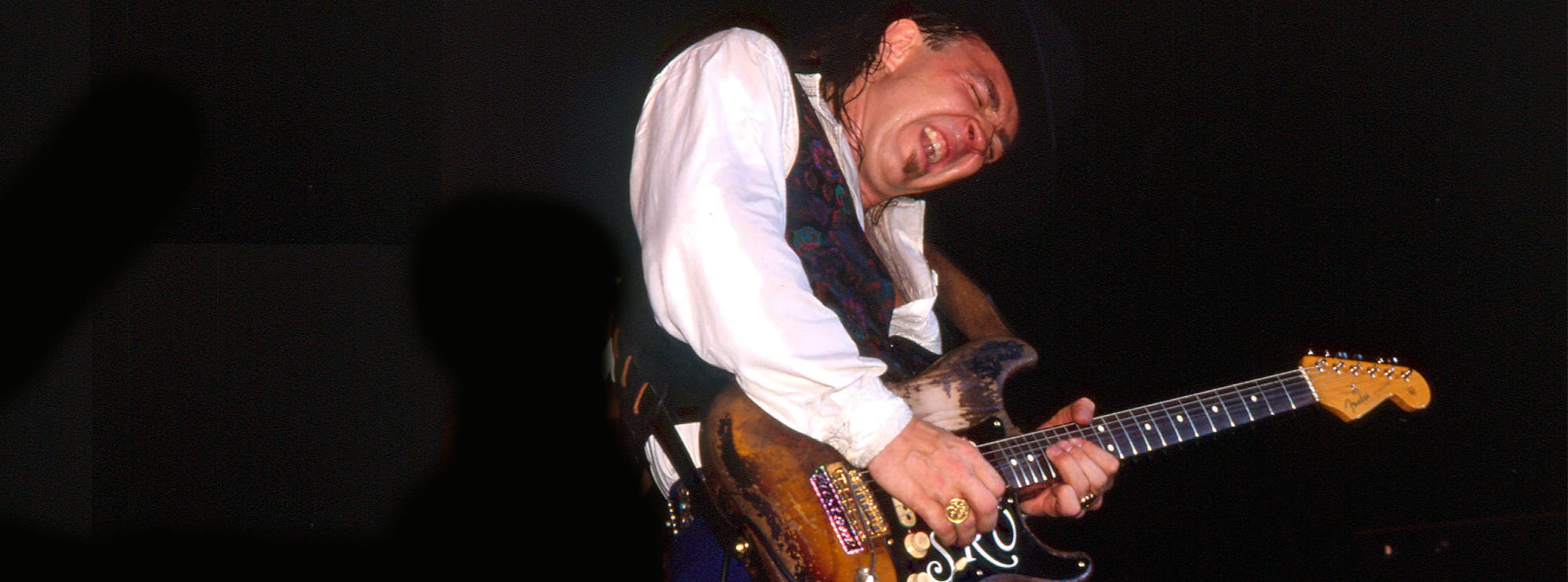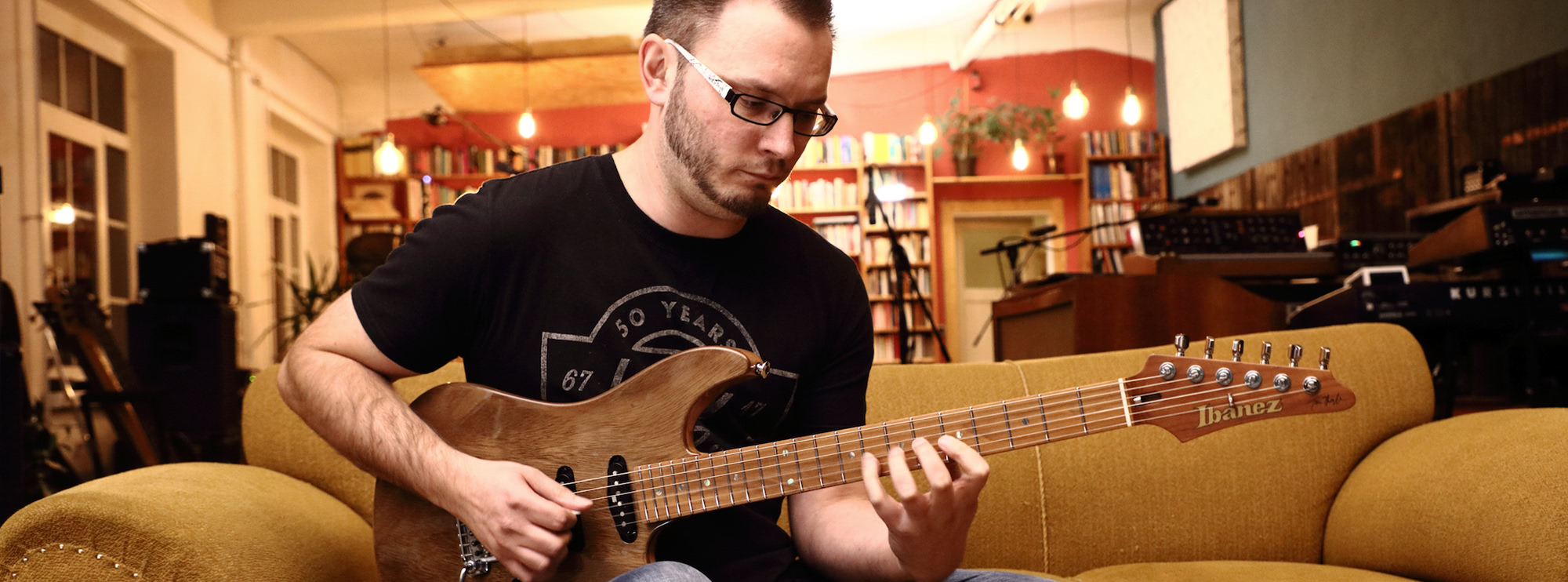"Bad Apples" by Guns N' Roses
"Bad Apples" by Guns N' Roses, a track from their ambitious 1991 album Use Your Illusion I, showcases the band's signature hard rock sound and features intricate guitar work that is worth a detailed exploration, especially for guitar enthusiasts. This song is an excellent demonstration of both rhythmic tightness and melodic guitar soloing, making it a prime piece for guitar players looking to understand the more advanced techniques utilised in rock music. Sam Bell breaks down this classic track in this exclusive Lick Library video tutorial.
Chords and Rhythm Guitar
The rhythm guitar parts in "Bad Apples" are particularly notable for their use of both power chords and full barre chords. The main riff and verses of the song primarily leverage E, A, and D power chords, played in a tight, aggressive style that defines the backbone of the track. These power chords are crucial for driving the rhythm forward, providing a solid foundation over which the lead guitar layers more intricate lines.
Additionally, the choruses expand into more harmonically rich barre chords, adding depth to the sound. These sections include G, A, and C major chords, creating a contrast to the more distortion-heavy verses. The song employs these chords with a slightly loose strumming technique that adds to the 'live' feel of the recording.
Scales and Lead Guitar
Slash, the lead guitarist of Guns N' Roses, uses a mixture of the minor pentatonic and blues scales to craft his solos and lead fills throughout "Bad Apples." The solos are predominantly in E minor pentatonic, utilising positions that Slash is famously comfortable with, often extending into the blues scale for added flavour. This choice of scales gives the solos a raw, expressive quality that fits perfectly with the song's energetic vibe.
Solo Analysis
The guitar solo in "Bad Apples" is a testament to Slash's ability to blend speed with melody seamlessly. Starting with a rapid ascent through the E minor pentatonic scale, he incorporates fast legato runs, quick string bending, and vibrant vibrato, maintaining musicality while displaying technical prowess. The use of pull-offs and hammer-ons within these scales allows for fluid movement across the fretboard, making the solo both a pleasure to listen to and a challenge to play.
Notably, Slash's control over dynamics and phrasing makes his solos stand out. He often starts a phrase with a softer touch, gradually building intensity and volume as he moves towards the peak of the solo. This dynamic control adds an emotional layer to his playing, engaging listeners and giving the solo a narrative quality.
Slash's Signature Style
Slash's playing on "Bad Apples" epitomises his approach to guitar solos — a perfect balance of aggression, technique, and melodic sense. His ability to articulate notes clearly, even at high speeds, and his preference for blending scales gives his solos a unique sound that is immediately recognisable. His use of the Les Paul guitar contributes significantly to the tone and sustain he achieves in this track.
Guitar Techniques Used
Throughout "Bad Apples," several guitar techniques are employed to enhance the expressiveness and impact of the guitar parts:
These techniques are staples in rock guitar playing, each adding a distinct character to the music. "Bad Apples" serves as an excellent study piece for guitarists aiming to master the hard rock style of the late '80s and early '90s, exemplified by Guns N' Roses. By dissecting and practicing the elements of this song, guitarists can develop both their technical skills and their ability to convey emotion through their instrument.
About The Tutor
Tutor Profile
Sam Bell
Sam Bell has been playing guitar from the age of 4, since then he has played many styles from Funky Blues to screaming Metal/Fusion on 8 string guitar. A member of UK tech metal band ‘Mask of Judas’, he is also currently writing his own solo instrumental album. He also...




